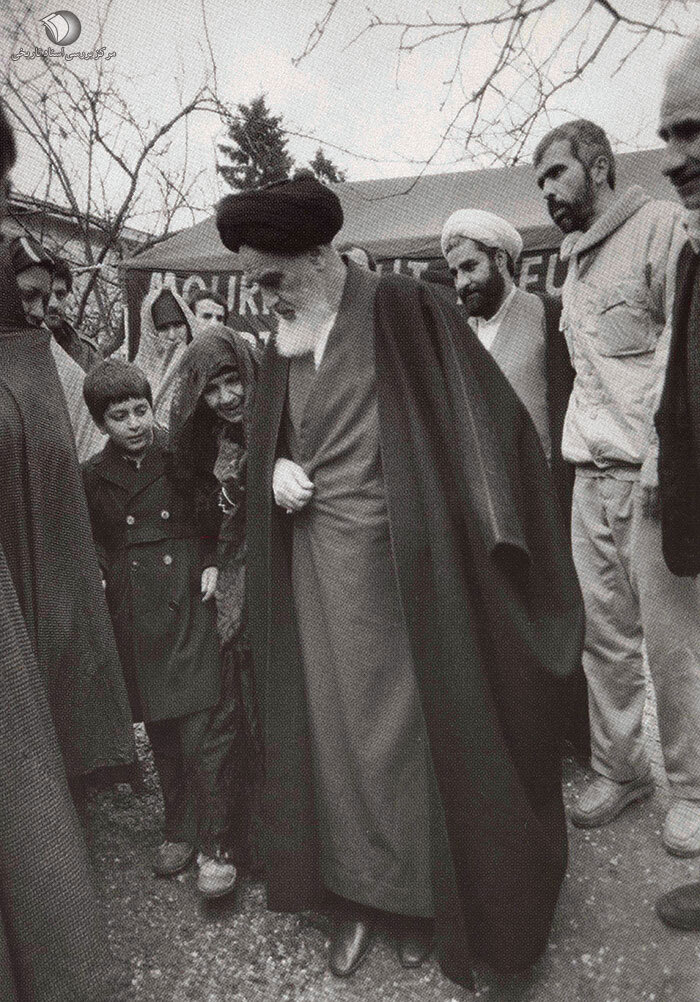The day on which Imam Khomeini moved to France from Iraq

On 4 November 1964, the founder of the Islamic Republic Ayatollah Ruhollah Khomeini better known as Imam Khomeini was secretly taken to Ankara and then to Bursa, Turkey. Almost a year later on 5 September 1965, he moved to the holy Iraqi city of Najaf and stayed there until Saddam Hussein pressured him to leave the country on 6 October 1978. He was exiled again by the pressure of Mohammad Reza Pahlavi to Neauphle-le-Château, Paris.
During his 13-year exile in the Iraqi holy city of Najaf, the Imam formulated his concept of political Islamic doctrine of Vilayat-e-Faqih.
The Pahlavi regime in Iran and Saddam regime in Iraq had put aside their differences after the signing of the 1975 Algiers Agreement and their friendly relations had begun to grow.
As the demonstrations and strikes by the Iranian people were gaining momentum in the early days of autumn in 1978, the Pahlavi regime asked Iraq to put more restrictions on Imam Khomeini.
After the Shah’s request, the Iraqi regime tried to silence Imam and asked him to end issuing political statements to the revolutionaries in Iran.
The founder of the Islamic Revolution rejected the Saddam regime’s call to give up political activities amid the developments in the Iranian streets. "This is just the beginning of the work. Tell the Baathists, I will not accept such a thing. I cannot be silent and those who believe in me fight and give their blood in Iran. If they (the Saddam regime) don't want me to be here, I will go somewhere else and continue to speak out," Imam Khomeini answered in response to the demand by the Saddam regime.
Subsequently, the restrictions on Imam’s political activities increased. The Saddam regime’s forces not only prevented the political messages of Imam from getting across to his audience, they also detained some of the people who were close to him.
Imam Khomeini sought to go to Syria first; however, due to the strained relations between Iraq and Syria and the possibility of the Iraqi government preventing him from traveling to the neighboring country, he decided to go to Kuwait first and from there to Syria.
After the Kuwaiti government did not allow Imam Khomeini to enter the tiny country from its shared border with Iraq on October 3, which is said to be because of the British government’s pressures on Kuwait, the Imam decided to go to Paris. On October 5, he left Baghdad for France with some of his companions, including his family and three Iraqi security officers. He landed at Paris Orly Airport at 14:20 Paris Local Time.
During his travel to Paris, Imam Khomeini sent out a message to Iranian people and other Muslims, telling them that his new destination was not pre-planned and he was embarking to France at God’s will. He further expressed hope that his journey would be in the interest of the impoverished Muslim Iranians and other Muslims. “There is no specific place for me. What matters to me is acting in accordance with a divine duty. The transcendent interests of Islam and Muslims matter to me,” he said in his message.
Upon his arrival, Elysee Palace informed Imam Khomeini that the then French President had wanted him to refrain from doing any political activity. But, Imam reacted angrily telling the French president’s representatives that such restrictions were against the French government’s claim about abiding by democratic values and that he would not give in to pressures.
The French President at the time Valéry Giscard d'Estaing wrote in his memoirs that he wanted to order the expulsion of Imam Khomeini from France, but at the last moment he changed his mind in fear of reaction in both Europe and Iran.
During Imam Khomeini’s 4-month exile, Neauphle-le-Château in the suburb of Paris was under the global media spotlight. Imam gave numerous interviews and held various meetings during which he told the world his views on Islamic governance and the future goals of the movement so that more and more people across the globe became familiar with his thoughts and the revolution he was leading. From there, he accelerated the developments in Iran leading to the victory of the Islamic Revolution.
Imam Khomeini returned to Iran on February 1, 1979, after 14 years in exile. His return was an important event in the Iranian history. Ten days after his return, the provisional government of Shapour Bakhtiar collapsed, bringing an end to the Western-backed tyrannical regime of Shah on 11 February 1979.
Leave a Comment